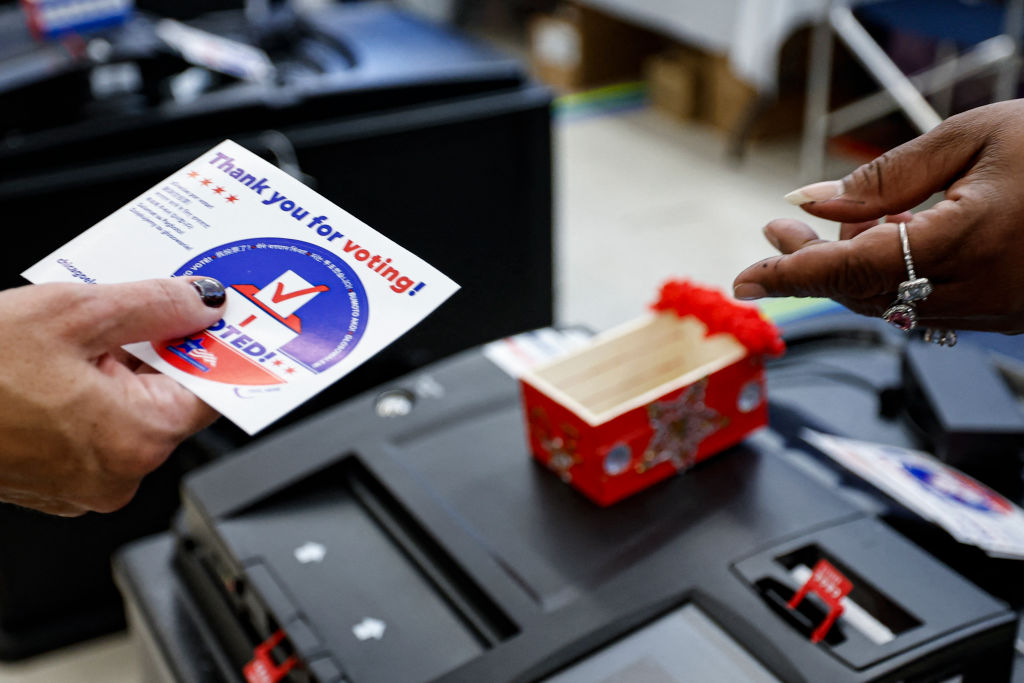By Robert Yoon, Associated Press
WASHINGTON (AP) — It’s usually possible to determine who won an election before the vote counting is 100% complete. But doing so requires determining how many ballots still need to be tabulated at any point in the vote count, and that’s not as straightforward or clear-cut as you might imagine.
In fact, it’s only gotten more complicated as elections have evolved, making traditional methods of tracking vote count progress less reliable.
What happened to ‘precincts reporting’?
For years, the most common way news organizations kept track of the progress in the vote count on election night was to calculate the percentage of precincts that had reported their results. But over the years, that method has become a less and less reliable measurement that does not reflect the realities of modern elections.
For starters, precincts throughout a state are not necessarily equal in population. Saying that 10% of precincts have yet to report could mean different things depending on which precincts are at issue. In addition, sometimes a state or county will count a precinct as reporting even if it has only reported some of its votes.
An even bigger problem is that “precincts” traditionally refer to Election Day polling places. As voting by mail and early in-person voting has gained in popularity, the “precincts reporting” measurement could be deceiving depending on how the votes are tabulated from state to state.
Some states do not include pre-Election Day votes in the voters’ home precincts — that is, the ones where they would vote if they voted on Election Day — and opt instead to lump all of their pre-Election Day votes into one precinct. In some other states, “precincts reporting” only reflects votes cast in person on Election Day and excludes any mail or early in-person voting altogether.
These states may show that all or nearly all precincts have reported complete results, even though the actual number of ballots yet to be tabulated might be significantly larger. Alternately, they sometimes report large numbers of early and mail votes before any precincts are reported at all.
In some states where there’s relatively little voting before Election Day or where election officials strive to assign mail and early votes to their home precincts, the percentage of precincts reporting does still provide a reasonably accurate sense of the votes left to be counted.
But across the board, The Associated Press calculates an expected vote estimate to provide a more consistent and reliable measurement to track the progress of the vote count on Election Night.
Reporting the expected vote
Clearly, the ideal way to calculate the number of ballots that remain to be counted is to subtract the total votes counted so far from the total number of votes cast overall. But since the exact number of votes cast in an election isn’t immediately available on election night, the AP instead analyzes several key pieces of election data to estimate the total votes expected to be cast in any given contest.
This estimate is based on several factors, including the total votes cast in previous elections, changes in population, voter registration figures and the competitiveness of the current election. Turnout data on pre-Election Day voting has become increasingly helpful in determining the expected vote, as the share of voters casting early ballots has gone up.
Once voting and vote counting begins, the AP will evaluate the latest Election Day voter turnout figures reported by elections officials as well as actual vote returns to update and refine its expected vote estimates.
Over the course of election night, the AP will report for every contest the percentage of the total expected vote counted so far. This percentage should steadily grow as the number of votes counted gradually approaches the expected vote total. But because the expected vote estimate is continually monitored and updated as more data becomes available, it’s possible that the percentage of the vote counted may temporarily get smaller because the estimate of overall turnout got bigger.
For example, if elections officials initially tell the AP that Election Day turnout in their state was 1 million voters but later revise that number to 1.2 million, the percentage of votes counted will drop temporarily before going back up again as more votes are tabulated.
What’s so difficult about nailing down the total votes cast?
The main challenge is that it can take a while for the people running elections to figure out exactly how many people voted in any given election. It often takes local and state officials weeks to arrive at the final, official number.
That’s in part because of mail voting. A local elections office might know exactly how many mail ballots they sent out to voters and have a good estimate of how many have been returned in the days leading up to Election Day. In fact, before officials begin counting votes, it’s often easier to know the approximate number of mail ballots cast than the number of people who turned up on Election Day.
Related Articles
The AP has called winners in elections for more than 170 years. Here’s how it’s done
Why and how AP counts the vote for thousands of US elections
News media don’t run elections. Why do they call the winners?
Why is Donald Trump campaigning in California, a state he’s almost certain to lose?
Doctor deems Harris in ‘excellent health.’ Her team aims to contrast with Trump’s scant medical info
But they won’t know exactly how many of those voters actually cast a mail ballot until their deadline to receive them, which is usually on Election Day itself or even after that.
With the number of voters casting their ballots by mail each year steadily on the rise, determining the total number of mail ballots can take some time, especially if the deadline to receive them is after Election Day.
Mail voting spiked in the 2020 election and outnumbered voting at polling places on Election Day for the first time ever as voters sought alternatives to in-person voting during the COVID-19 pandemic. While the level of mail voting is expected to surpass pre-pandemic levels, in many areas, it may fall in comparison to the 2020 election, adding another complication to estimating the expected vote in this year’s elections.
Read more about how U.S. elections work at Explaining Election 2024, a series from The Associated Press aimed at helping make sense of the American democracy. The AP receives support from several private foundations to enhance its explanatory coverage of elections and democracy. See more about AP’s democracy initiative here. The AP is solely responsible for all content.












